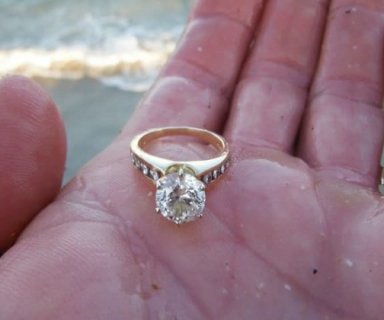Advertisements
Swimming is one of the best things you can do. It’s good for almost every bone and muscle in your body, and gives you important time away from your phone or computer screen. Just 20 minutes of swimming a day can vastly improve your cardio and mental health – as well as give you a great swimmer’s body.
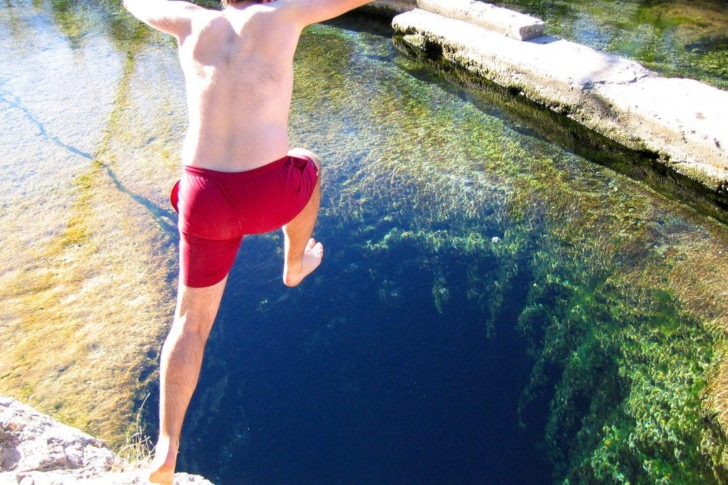
But we can’t just dive in anywhere. If you don’t have access to a gym or public pool, swimming could cost you your life. Here, we outline some of the places you should never dip your toe into. You have been warned!
The Boiling Lake – Dominica
This is one of the most dangerous places in the world to take a swim. Below the water is scalding hot liquid magma underneath the base of the lake. This often means that the water raises to boiling point with very little prior indication.
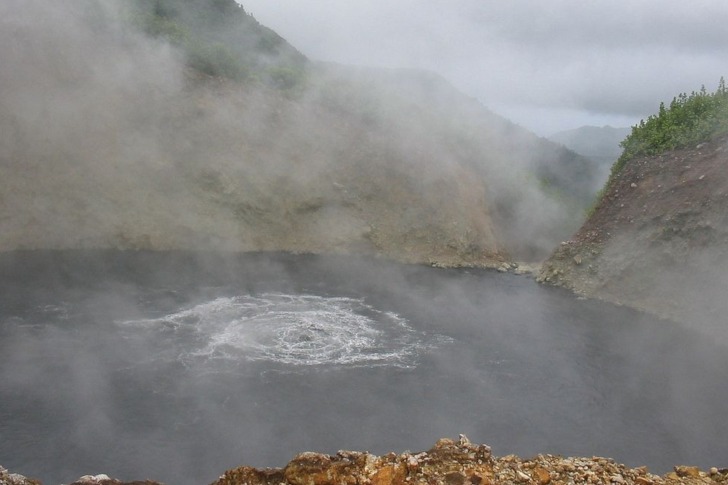
If you’ve ever burnt yourself in the shower, then you’ll understand only a fraction of what this is capable of doing. You don’t want to become anyone’s cooked steak, so stay away!
The River Nile – Africa
The world’s longest river may be considered the cradle of humanity, but that doesn’t mean you just jump in and take a swim. The African river is home to many deadly crocodiles waiting for their next dinner.
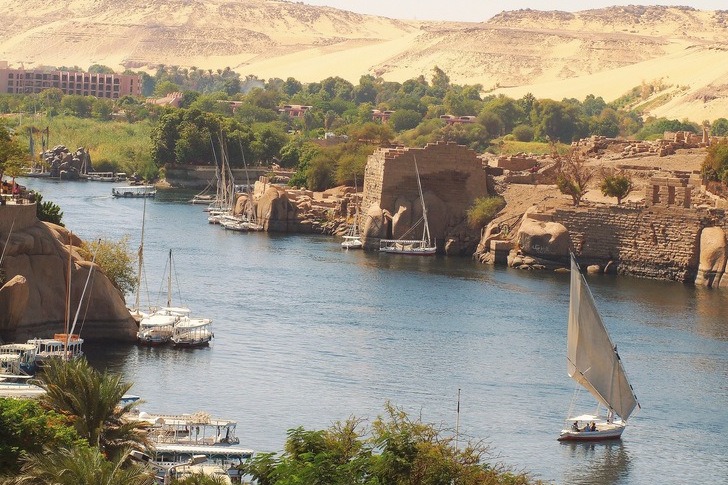 tashturgoose.com
tashturgoose.comThey might not be the world’s most deadly animals in the world, but you don’t want to meet one head to head. Chance of attack is fairly low: about 100 people a year are attacked by crocodiles along the 6,650-mile river. Still, you don’t want to take your chances.
Hanakapiai Beach – Hawaii, USA
Hanakapiai Beach is an incredibly popular tourist attraction for those visiting Hawaii. The coastlines and nature make it the perfect getaway location. While sunbathing is encouraged, you won’t want to enter the water unless you know what you’re doing.
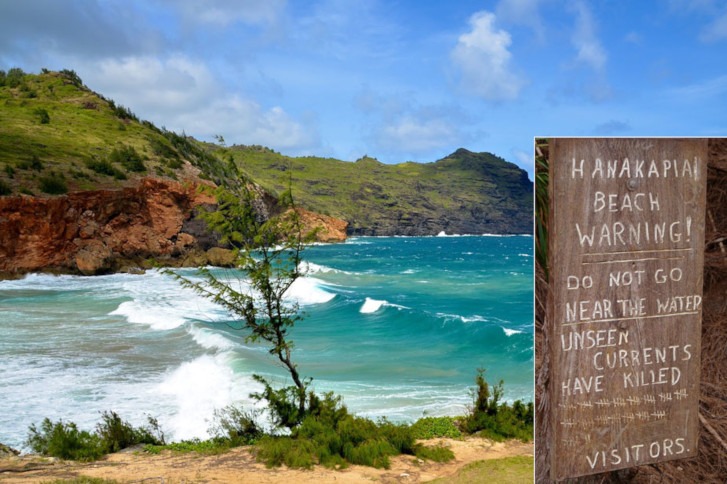 earthtripper.com
earthtripper.comThe strong winds and currents mean that swimmers can easily be dragged away from the shore and swept into the sea. Apparently, one man who works on the island has seen two children swept out. After a helicopter search, the boys were found.
Bubbly Creek – Chicago River, USA
This part of Chicago River is not a recommended swimming spot, and for several reasons. First, the creek is the hub for runoff that makes its way into the river. Most of this is food, waste, fecal matter, and more.
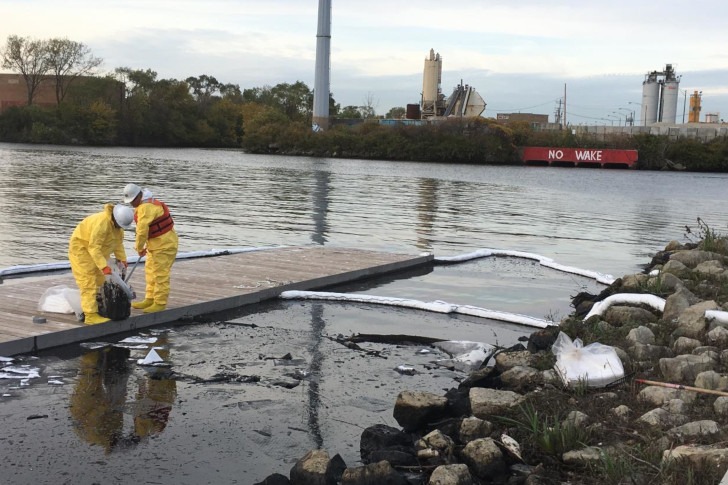 EPA
EPASecond, The runoff has made it so bad that the toxic chemicals actually kill any living fish in the area. Even if you didn’t mind swimming in all that junk, there’s a high chance it could kill you.
Samaesan Hole – Thailand
Thailand has some of the most amazing coastlines in the world. The collection of islands have many points where people can swim, dive, and sail. Most of the time, none of this is a problem. There’s one area that is a cause for concern: Samaesan Hole.
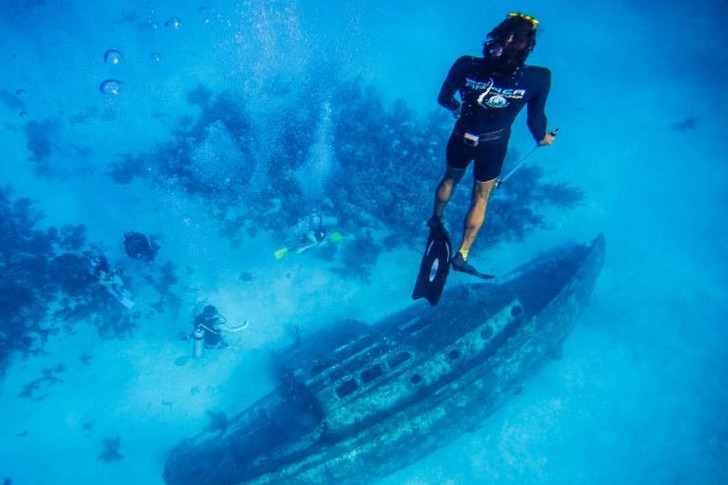 Shutterstock
ShutterstockThis underwater cave is one of the deepest parts of the country, causing minimal visibility. If you find yourself diving down there, consider that you won’t be able to easily see where you’re going and could get lost.
Lake Karachay – Russia
This lake is found in the very middle of Russia and is one of the most toxic lakes in the world. Over the years, Russian governments have polluted it with toxic waste during a particularly relaxed time of regulations. Even a short swim in the lake could kill someone after an hour.
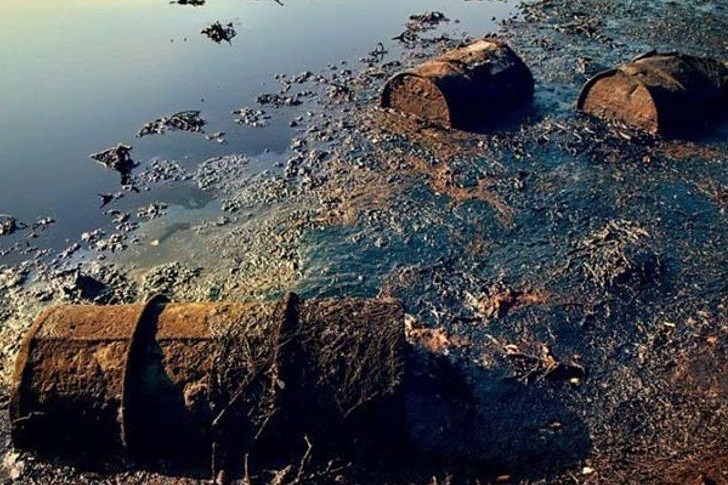 learning-history.com
learning-history.comNowadays, the government is trying to fill it with concrete to ‘kill’ the lake and save any more accidents. A victory for the locals who need to stay away.
Eagle’s Nest Sinkhole – Florida, USA
This sinkhole in Florida is ok to swim in, but the state is desperately trying to get people to stop diving below the surface. The hole dives deeper than 300 feet and has taken the lives of at least 10 people who have dived down to explore it.
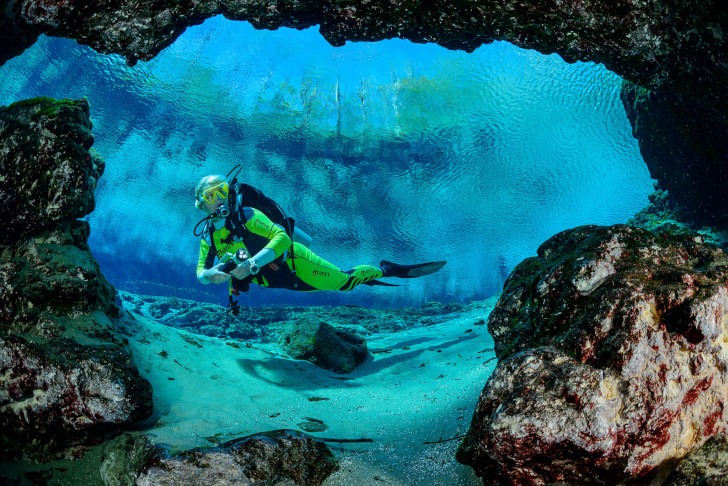 Wolfgang Polzer / Alamy Stock Photo
Wolfgang Polzer / Alamy Stock PhotoRecently, they permanently closed the hole to make sure they can save more lives. There are even signs that are posted underwater highlighting the dangers to divers and asking them to leave – would you risk it?
Kipu Falls – Hawaii, USA
According to official reports, five people have died in the last five years at Kipu Falls. Visitors travel from all over the world due to its appearance in Raiders of the Lost Ark. Owners of the location are somewhat at a loss at what to do: they have banned people from entering the region to try and save lives.
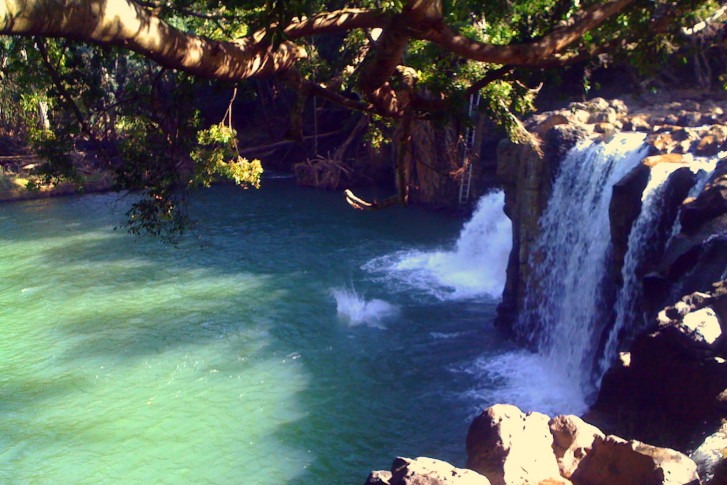 Bryce Edwards – Flickr
Bryce Edwards – FlickrBut, the interest surrounding the deaths attracted a larger number of visitors who wish to explore it for themselves. Now, swimmers are considered trespassers and aren’t protected by the law.
The Amazon Basin – South America
There are many reasons that make the Amazon Basin so dangerous for swimmers. First, the water is full of predators who are eagerly awaiting their next meal.
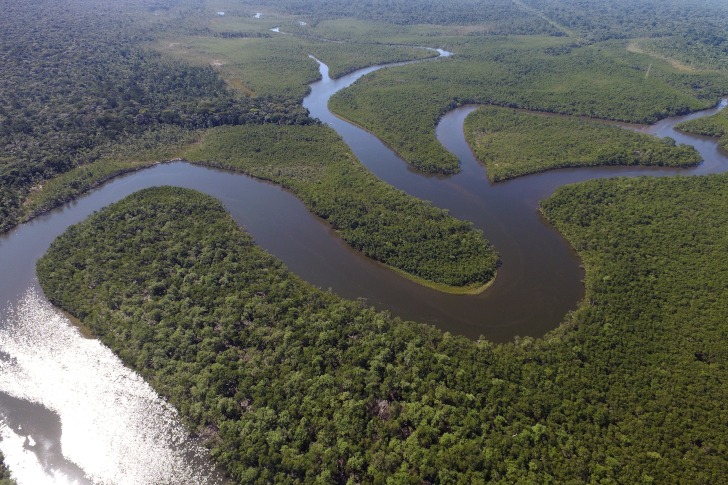 Shutterstock/Filipe Frazao
Shutterstock/Filipe FrazaoThese include barracuda, piranhas, and deadly candiru. This small fish will allegedly swim up to your urinary tract and feed on your genitals before expanding like a pufferfish. If you think that sounds less than desirable, you’re going to want to give this swim a miss.
Lake Victoria – Tanzania and Uganda
This is the world’s third largest lake and Africa’s largest. Despite its size, there are parts of the lake you will want to avoid. Official reports suggest that around 5000 people per year die from swimming in it. The lake is so big that it has its own weather system.
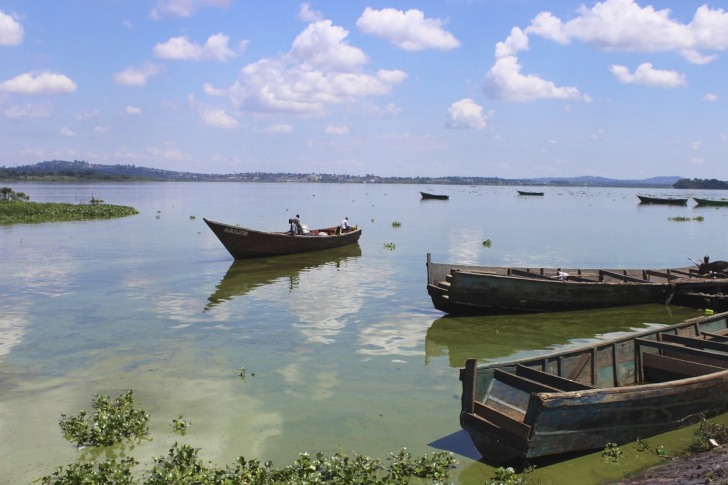 lake-victoria.net
lake-victoria.netThis means there can be unpredictable changes on a daily basis. If you happen to swim into a storm, it could catch you off guard and drown you. Better to stay away.
Horseshoe Lake – California, USA
There’s nothing special about a normal lake in California – in fact, the state has a bunch of them. One thing is strange about Horseshoe Lake: the inexplicable amount of Carbon Dioxide surrounding the area.
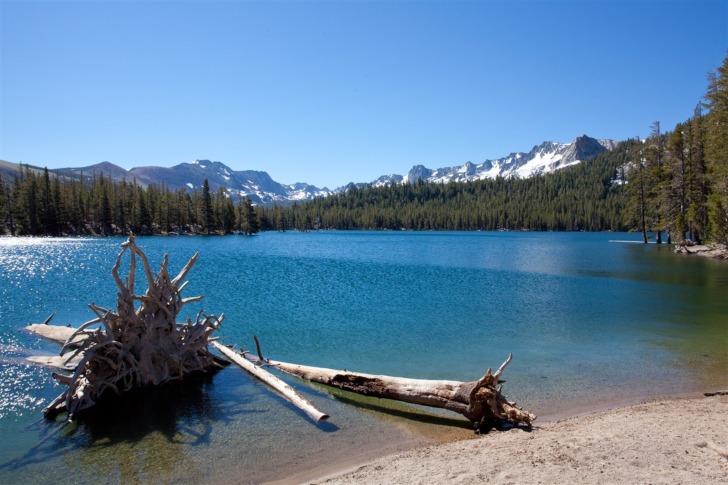 mammothtrails.org
mammothtrails.orgSwimming In Rio Tinto – Spain
Here is one place you certainly won’t want to swim in: Rio Tinto. The surrounding areas were once used as a mine which caused the waters to become incredibly polluted. Now, the water is red and can poison you if you swallow any of it.
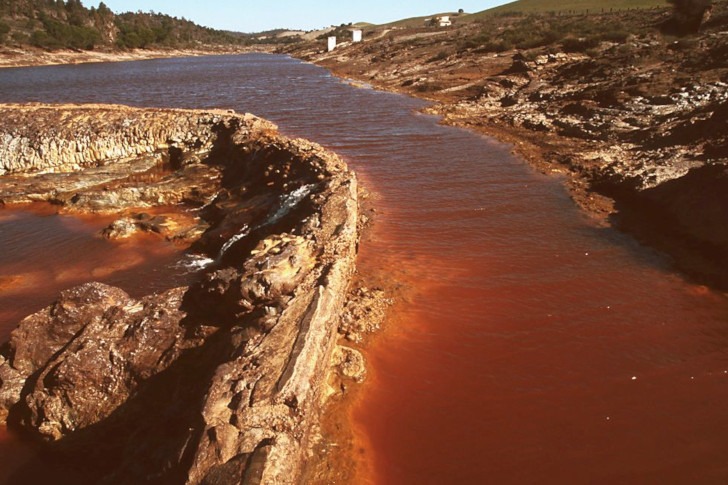 juntadeandalucia.es
juntadeandalucia.esIn fact, if you’re looking for somewhere to dissolve a body (not that we could think why), then your best bet is dunking it in these waters. Yeah, it’s better to avoid this area completely if you value your life.
The Ganges River – India
In some respects, industrialization has its benefits. We all have more technology, a better economy, better healthcare, and overall improved standard of living. Sadly, the Ganges River in India is an example of how industrialization can cause some serious damage.
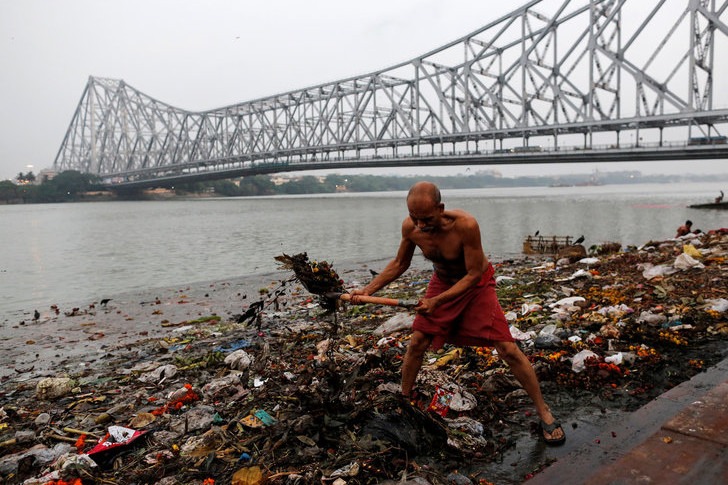 REUTERS/Danish Siddiqui
REUTERS/Danish SiddiquiIt’s the scene of pollution, carbon emissions, and other problems. The pollution in the surrounding areas has made it almost impossible to swim here. Visitors should be staying away from this area and staying dry.
Swimming With Sharks In Gansbaai – South Africa
Another name for Gansbaai is ‘Shark Alley’ due to the high level of, well, sharks in the area. Some of the waters surrounding the African country are known to have an extremely high number of sharks which can cause chaos and destruction wherever they go.
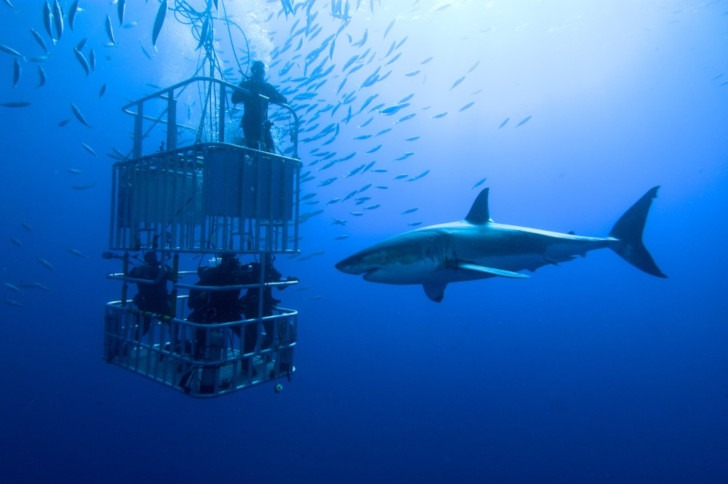 holidaybug.co.za
holidaybug.co.zaThere are local businesses who offer tourists the chance to swim with these sharks in a cage, although these have also caused many deaths. Just take our advice and stay away from Gansbaai.
Hoover Dam – Nevada, USA
This iconic Dam on the corner of Nevada and Arizona actually made it illegal for people to swim in its waters. So even entering the water can get you some prison time and is not worth the risk.
 grayline.com
grayline.comSecond, the water is full of strong currents which have sadly taken the lives of daredevil swimmers. Since dams work to control the water flow in neighboring regions, you never know when it’s going to open its gates. So stay out the water or you might be blasted out to the Colorado River.
Citarum River – Indonesia
Indonesia can be one of the most amazing places to visit – that is if you know where to go. There are some amazing shores to explore with waters to swim in, but others can be more dangerous. The Citarum River is a strong example of this.
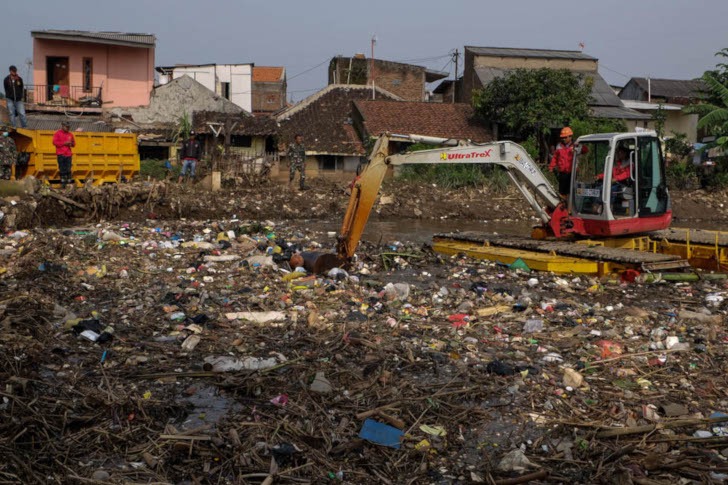 HASIBUAN/AL JAZEERA
HASIBUAN/AL JAZEERAHigh levels of pollution in surrounding areas have seeped into the river making it a hub for poisonous waters. It’s not just chemicals but also physical trash that citizens are throwing in to use it as a garbage bin.
The Buxton Derbyshire Blue Lagoon – UK
The United Kingdom has a bunch of lakes that might be best left alone. One example of this is the Blue Lagoon in Buxton, Derbyshire. Its pH level currently stands at an extraordinary 11.3, meaning it has the same chemical composition as ammonia or bleach.
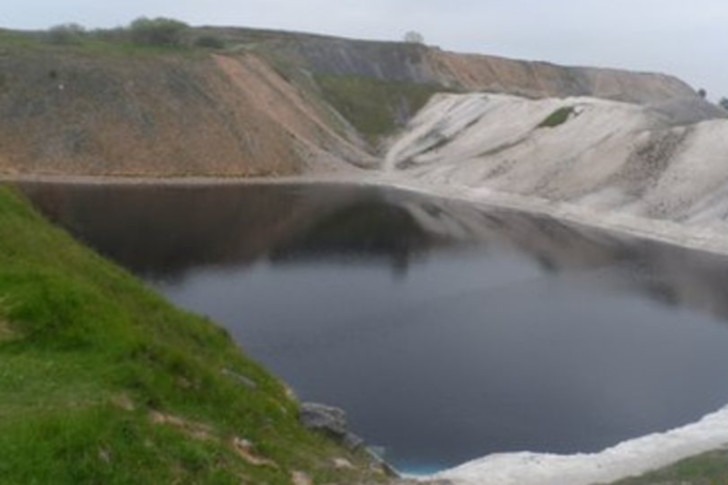 Rachel Thomas – BBC
Rachel Thomas – BBCWhile the waters might look like a lovely shade of blue, you won’t be enjoying the feeling of strong alkali on your skin if you enter the water. Stay away.
The Gulf Coast – USA/Mexico
The Gulf Coast is not like your normal sea experience. Aside from being on the border of two countries with a contentious relationship, the waters are full of a very spooky animal you will want to avoid. This swimming snake exists to prove that nature can be terrifying.
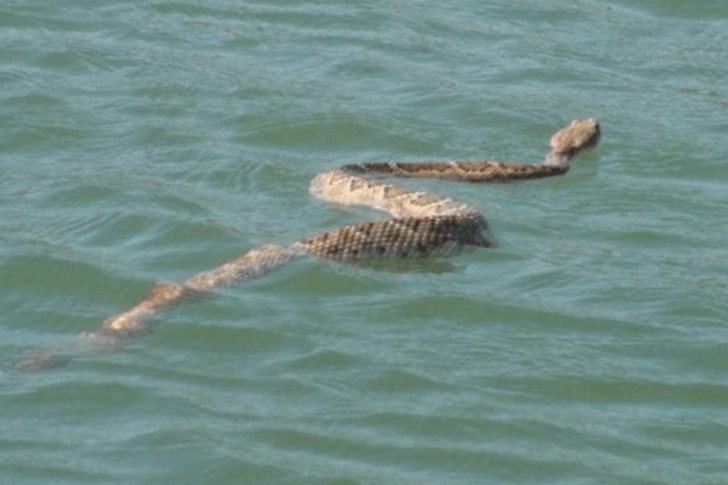 Via science101.com
Via science101.comIf you want to catch a refreshing swim in the Gulf Coast, remember that you’ll be sharing the waters with these creatures. Some might be tempted by the warm water, but you won’t be smiling when you see a rattlesnake.
Reunion Island – Madagascar
Reunion Island is a small island off of Madagascar, which itself is a small island off of Africa on its east coast. It can be found in the Indian Ocean and has become the shark attack capital of the world!
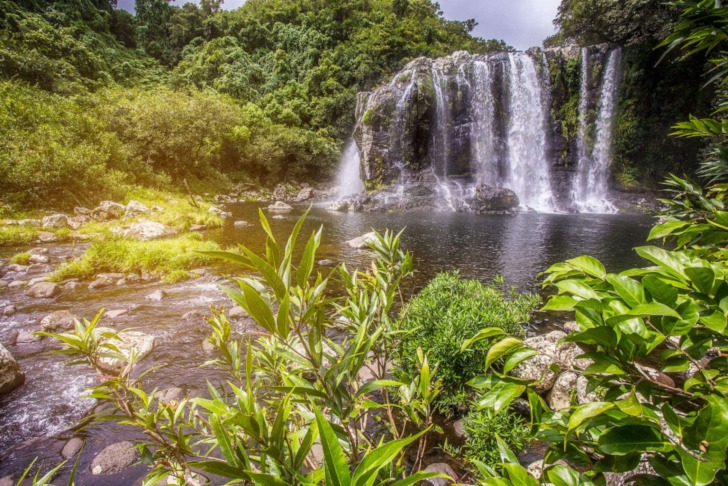 www.wlh.co.za
www.wlh.co.zaIt’s actually not too far from the South African ‘Shark Alley’ mentioned previously. Just on the small island, there have been a record 39 attacks. You will definitely want to take it into account if you find yourself near the waters.
Blue Lake – Russia
Blue Lake can be found in Kabardino, Balkaria, Russia. It’s often been a point of interest for scientists due to its strong blue color. This often causes many people to search the lake as much as they can – but no one has ever managed to find its bottom.
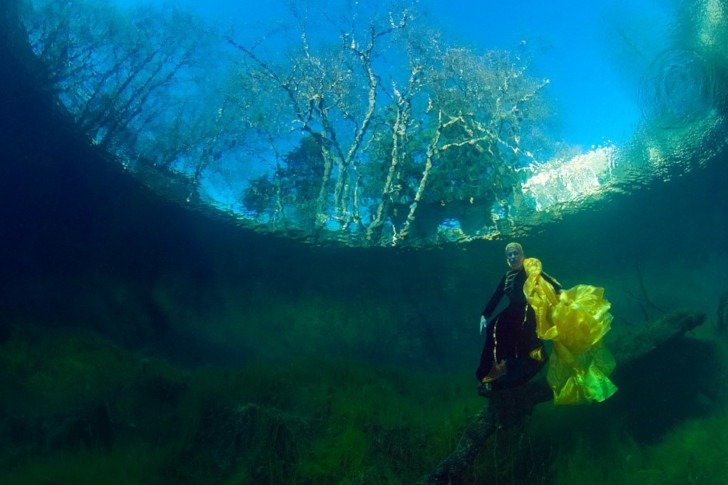 © Viktor Lyagushkin / Barcroft Med
© Viktor Lyagushkin / Barcroft MedStrangely, many people have tried and failed to reach the end of this incredibly blue lake. Over the years, it’s become pretty mysterious and now people recommend that tourists stay away from it. We expect many urban myths to be born soon!
The Strid – UK
Another British place that we should avoid comes in the form of a river stream in Yorkshire. The currents are particularly strong and can suck most average sized men under to the bottom of its waters.
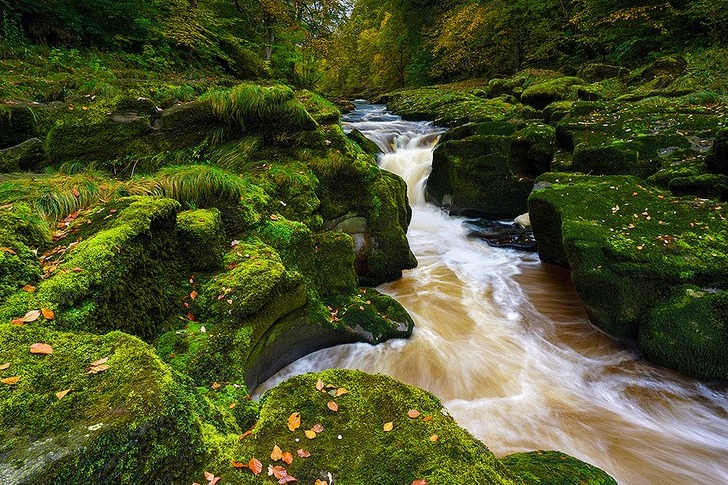 James Whitesmith/Flickr
James Whitesmith/FlickrAs well as the strong current, there are sharp twists and turns surrounded by sharp rocks that can easily knock you unconscious. It’s best to stay out of the water for this trip up north.
Swimming In Queensland – Australia
Overall, Queensland is the second largest territory in the Commonwealth of Australia. While the country has a myriad of natural dangers, its waters are definitely something to consider.
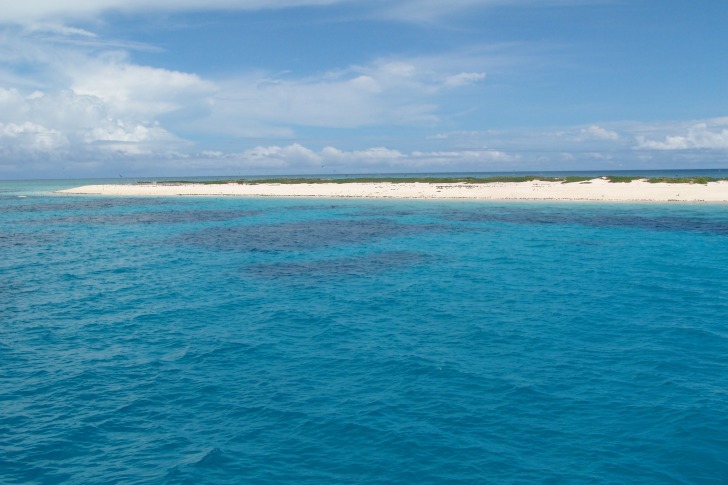 goodfreephotos.com/ – Free Domain
goodfreephotos.com/ – Free DomainThe seas are full of dangerous and poisonous sea creatures that are desperate to have a big dinner in the form of a human being. These include sharks, saltwater crocodiles, and jellyfish. No thanks! We will risk our lives in the outback, instead.
Bolinas Beach – California, USA
The everyday traveler might know that California is home to some of the best beaches and coasts to travel to. However, they can also be some of the most deadly. One of these dangerous beaches is known as Bolinas Beach. Locals will be well aware of the dangers of the Red Triangle.
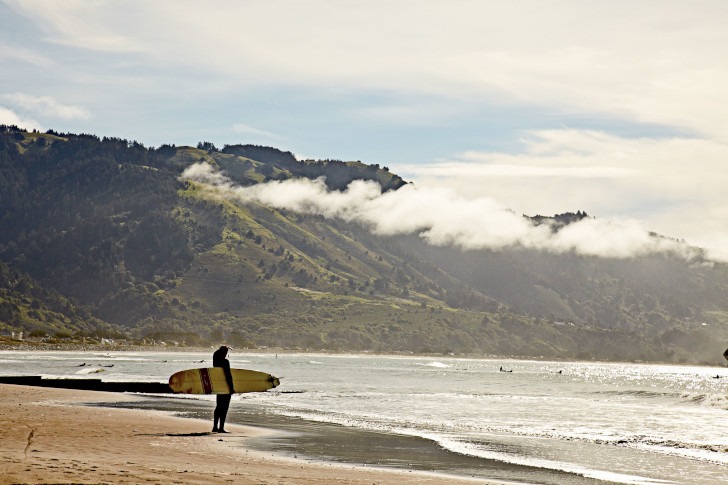 coastalliving.com
coastalliving.comThis inexplicable triangular region is home to many great white sharks that like to meet and grab some dinner. Sadly, they find it hard to distinguish between seals and surfers- so don’t risk your life on it! You might just get caught in the belly of the beast.
New Smyrna Beach – Florida, USA
On the other side of the United States. we will find ourselves in Florida which also has some beautiful beaches to enjoy. You might not think about the dangers of sharks in the Sunshine State, but it can be a deadly mistake if you do.
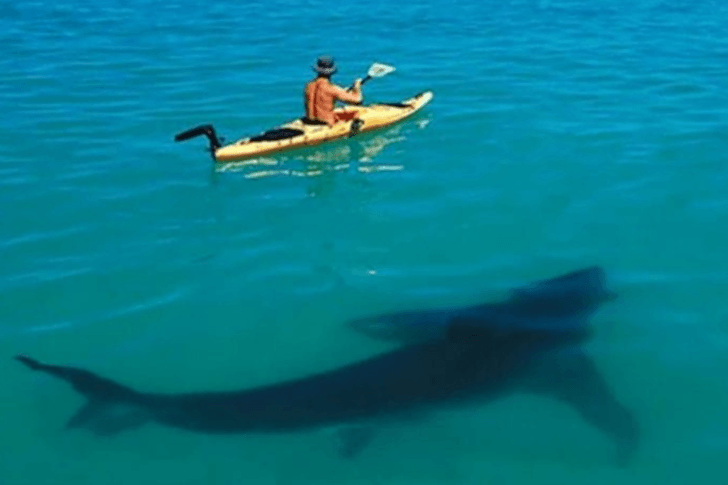 The Atlantic
The AtlanticNew Smyrna Beach attracts an unusually high number of sharks in the region that have caused many divers to stay on the coast. In fact, it matches Reunion Island as one of the most shark-infested regions in the world. It might be better to give this one a miss.
Victoria Falls – Zambia
The risks of swimming in Victoria Falls don’t come down to sharks, but you can imagine why we might warn against dipping into the waters here. Located in Zambia, this is one of the world’s greatest natural waterfalls. It might just be too irresistible!
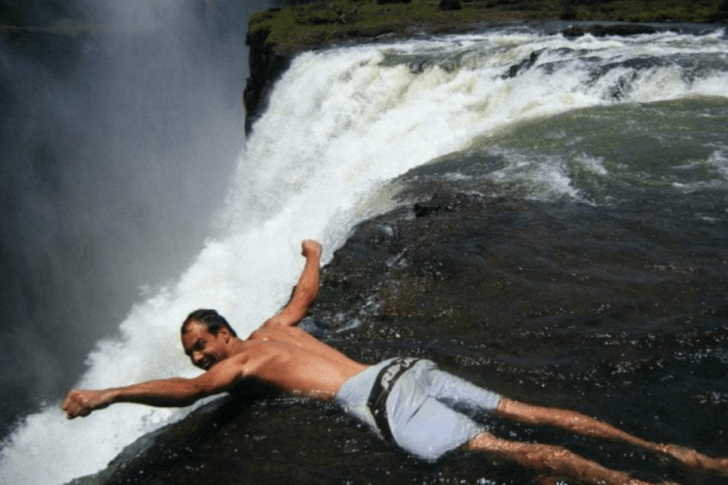 Moco-Choco
Moco-ChocoBut think again: the waters are incredibly strong and you could run the risk of being dragged over the edge. With a height of 108 meters, you’re not going to want to slip over the edge. Get your holiday selfie from a safe distance.
Lake Kivu – Rwanda
Lake Kivu is considered one of the most dangerous lakes in the world. This isn’t restricted to swimming in it, but the Rwandan region is home to a nearby volcano. It is still active and still has bursts of carbon dioxide that erupts from the ground.
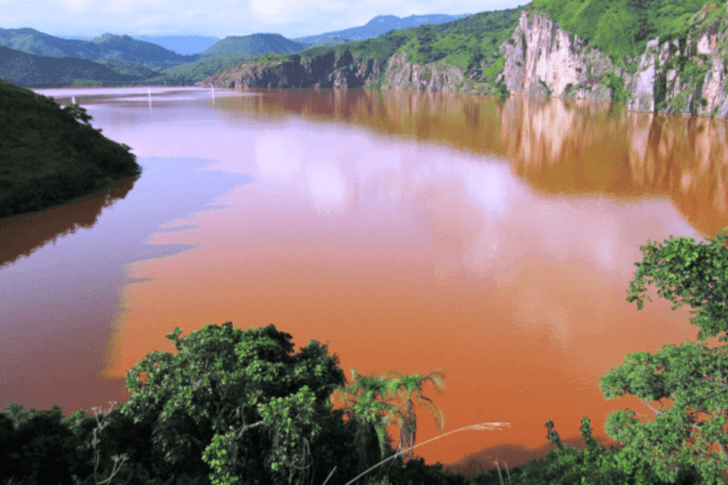 GlobalChange
GlobalChangeThis means that passersby are
Myrtle Beach – South Carolina, USA
Here’s another example of a seemingly quaint and regular beach. Usually, Myrtle Beach is totally safe and perfect for the whole family to enjoy. Sometimes, however, things can become a bit more deadly. One of the main reasons is due to the dangerous riptides that can be a problem for those caught in them.
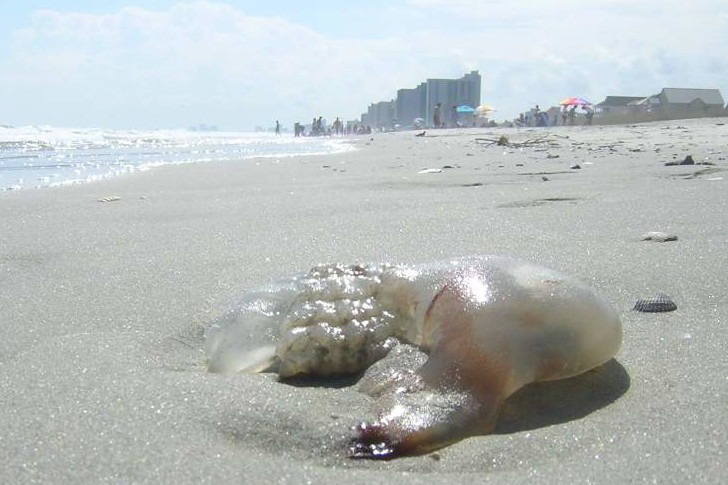 Kyle Smith / city-data.com
Kyle Smith / city-data.comThe dangerous riptides can drag beachgoers out to the sea and keep them there due to strong currents. What’s more, the water is occasionally full of Jellyfish who will be happy to sting you if you invade their territory. Ouch.
Swimming Along The Gulf of Thailand
Another part of the world that is home to some deadly Jellyfish is the Gulf of Thailand. Box Jellyfish – which only measure at about eight inches long – have the potential to kill adult humans with their strong shock. The biggest problem during a sting is the paralysis you suffer.
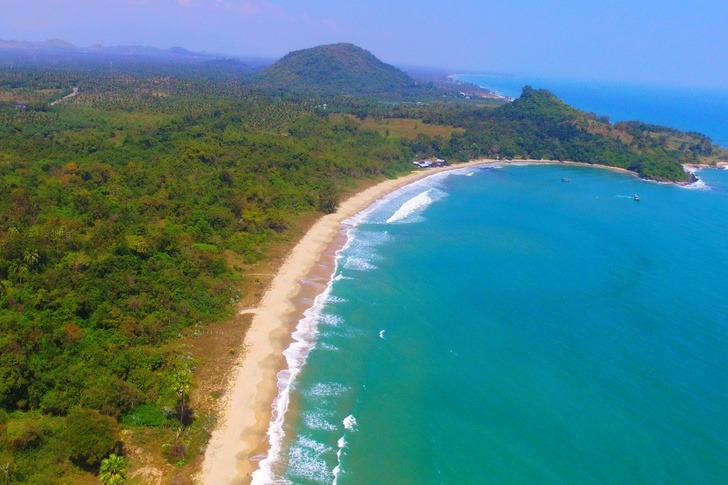 true-beachfront.com
true-beachfront.comWhile you make not die from the amount of poison injected into you, if you become paralyzed in the water you run the risk of drowning. Obviously. So It’s best just to avoid these areas or go with a guide who knows when it is safe to dive in.
Mono Lake – California, USA
Mono Lake is found 100 miles south of Lake Tahoe and has some strange natural features. Usually, many people journey through the region without much interest, but there’s an area here which attracts attention. Due to tributaries in Los Angeles and other towns nearby, Mono Lake is almost entirely drained.
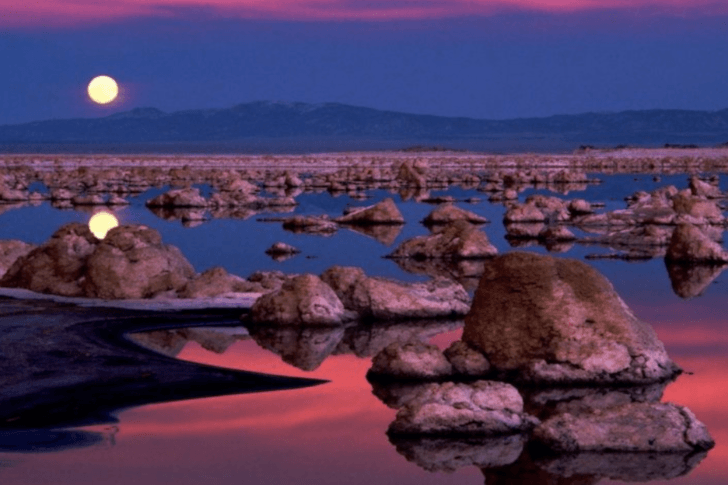 YourAmazingPlaces, via Science101
YourAmazingPlaces, via Science101 So why not swim in it? Well, the chemical imbalance left over from the drained water has caused unhealthy toxic levels in the remaining water. If you decide to dive into the lake, you might just get sick.
Laguna Caliente – Costa Rica
So, you fancy a swim in the Laguna Caliente. You might want to keep in mind that its name translates into English as ‘hot lagoon’. Whereas some may marvel at the wonders of a naturally hot Laguna, this doesn’t mean you should swim in its waters.
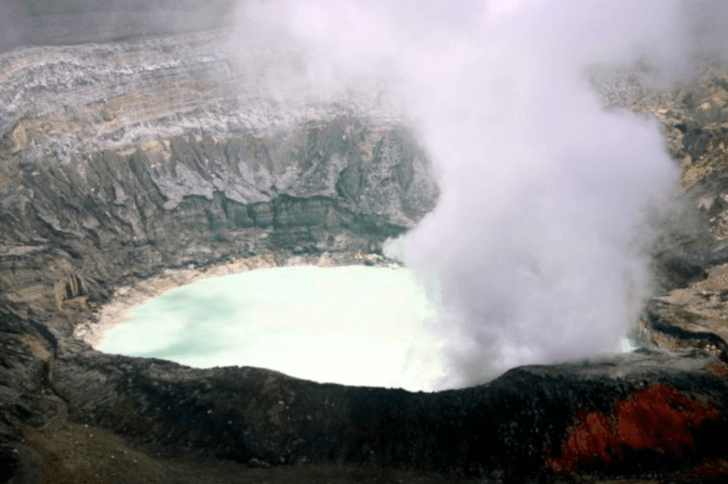 Pinterest, via Science101
Pinterest, via Science101 The Laguna is located right in the middle of a volcano that reaches temperatures well above boiling. If you find yourself swimming in the waters, it might be the last thing you ever do. As of recently, visitors even need a permit to enter the area.
Lake Chagan – Kazakhstan
As you can probably guess from the photo, Lake Chagan is also known as the ‘nuclear lake’ in the region. This is, believe it or not, one of the reasons why you might not want to take a swim in it if you find yourself nearby. But how did it get so contaminated? It was created by detonating a Russian nuclear bomb.
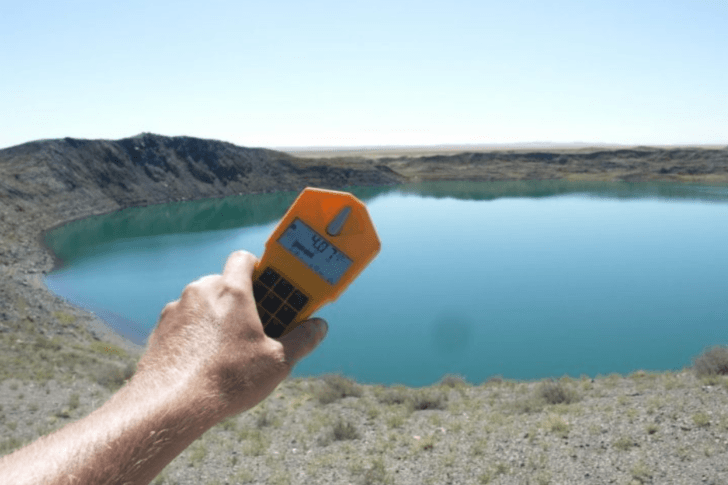 Forbes, via Science101
Forbes, via Science101 Today, radiation still hangs around the region, making it a dangerous place to visit – let alone swim in. Overall, the bomb destroyed 353 million cubic feet of dirt from the Earth. It is 300 feet deep and 1,300 feet wide. Just stay away, we’d say.
Lake Nyos – Cameroon
Nyos is a technically a crater in the African country of Cameroon. Historians believe that it was created after an asteroid collision thousands of years ago. While the region has remained pretty calm in recent years, the lake sits near an active volcano called the Cameroon Volcanic Line.
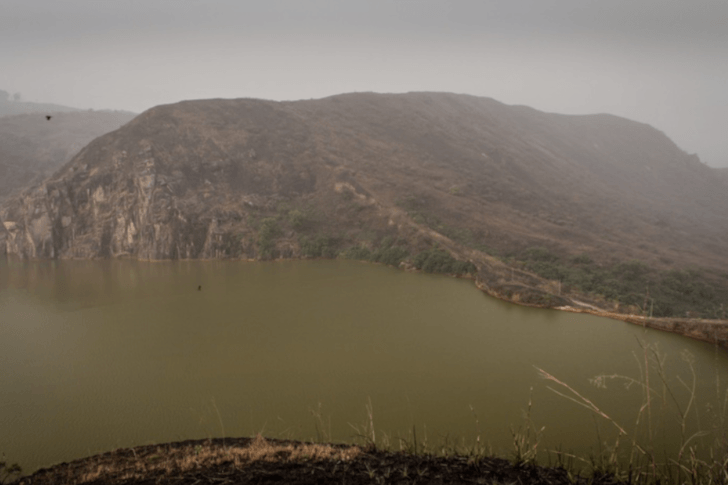 The Road Choseme, via Science101
The Road Choseme, via Science101 Its last deadly eruption was in August 1986. It released a massive about of CO2 into the air through the bottom of its waters. This caused the deaths of 1,700 humans and 3,000 animals. It’s one of the worst limnic disasters ever recorded. Do you want to be there when it happens again? Thought not.
Nyiragongo – Congo
Take a long look at this photo and ask yourself if you would want to swim here – we think we know the answer! Nyiragongo is located in the Democratic Republic of Congo and is literally a pit of lava in an active volcano.
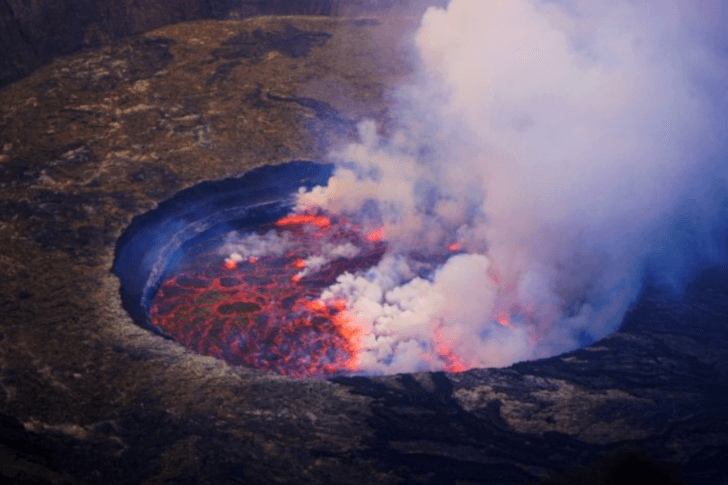 NeverEndingFootsteps, via Science101
NeverEndingFootsteps, via Science101 Even if you don’t take a dip into the center of the volcano, it’s still a dangerous place to go. It emits an extraordinary amount of carbon dioxide that can cause suffocation and death. It’s definitely not worth walking there alone – make sure you visit safely with a professional guide.
Berkeley Pit – Montana, USA
Located in Butte, Montana lies a lake that is probably best left alone. It used to be a copper mine, where people would explore and search for the material. Eventually, it was filled with water after people stopped finding what they were looking for. Does that mean it’s safe? Well, it’s on this list…
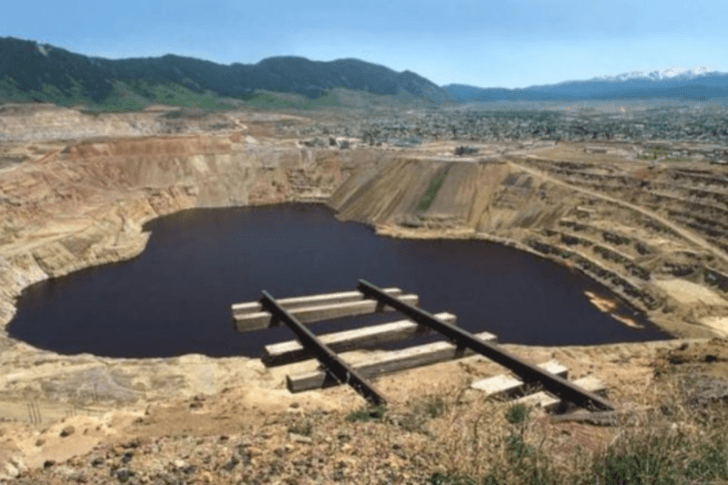 Sometimes Interesting, via Science101
Sometimes Interesting, via Science101 Due to the chemical composition, you should definitely not go for a swim in Berkeley Pit. It’s proven to be incredibly toxic and can have terrible effects on the body. Since you’re in Montana, you can find other lakes to swim in!
Beqa Lagoon – Fiji
Generally, Lagoons are considered to be one of the nicest places you can swim in. They’re usually in the middle of beautiful scenery and warm waters that are the perfect climate. Unfortunately, this can’t be said for Beqa Lagoon in Fiji. Much like Reunion Island, it is full of dangerous sharks.
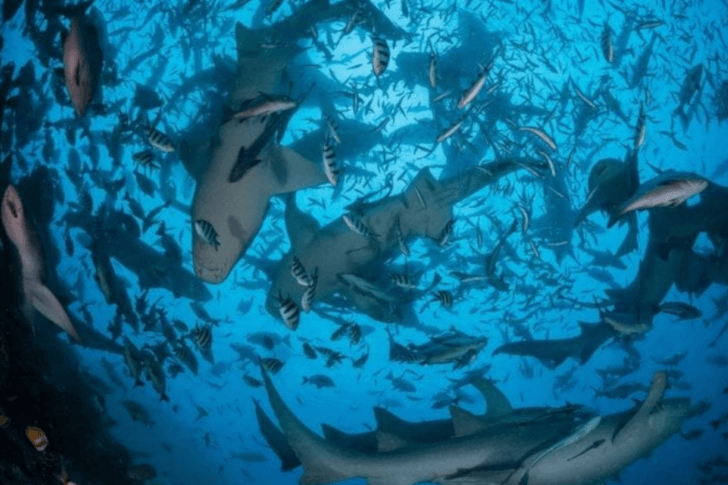 AllwaysDive, via Science101
AllwaysDive, via Science101These fellas are always looking for their next snack, which means they will like the look of you if you take a dive. Next time you’re in Fiji, make sure to avoid this particular Lagoon and find somewhere a bit safer.
Swimming In Barbados
Barbados has garnered a reputation as one of the most amazing tourist attractions due to its glorious beaches. While this might be true, the dangers that these waters possess is woefully underrated. Mainly, the currents that rest along the shiny shore are a threat to most swimmers.
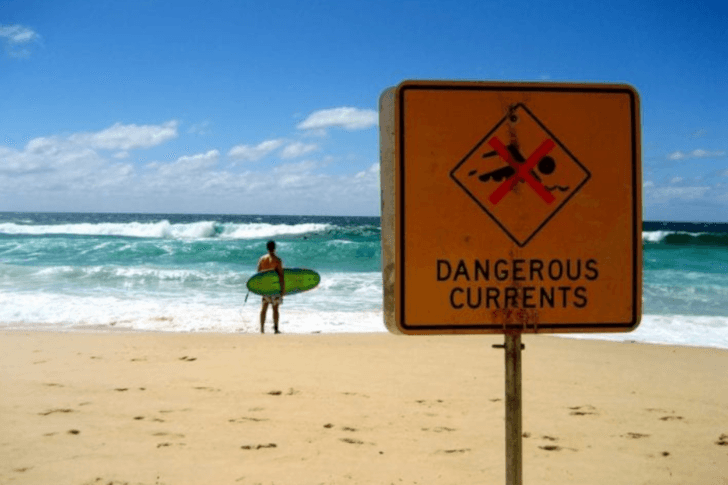 Flickr, via Science 101
Flickr, via Science 101There are a few exceptions to this: generally, the north and south sides of the islands are dangerous, with the east and west sides being a bit safer. Overall, you won’t want to enter the waters without a professional present.
Mumbai – India
Yes, the parts that attract you to India are some of its white coastal beaches with bright blue seas. While there are certain (and touristy) areas that are permissible to swim in, there’s one place that you should never dip a toe into – Mumbai.
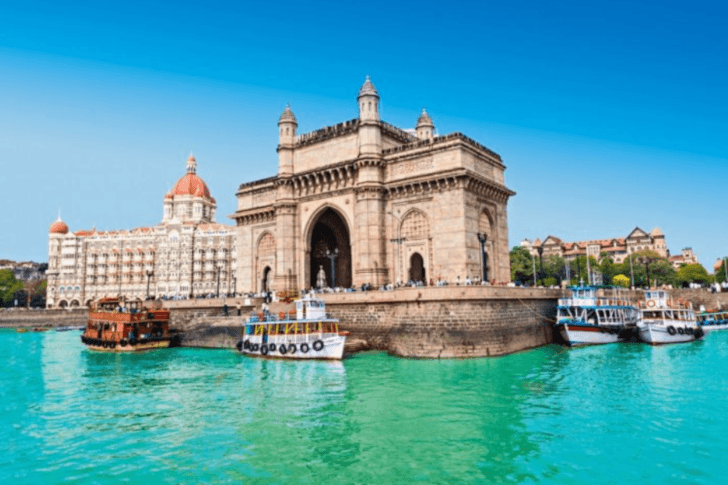 Luxury Asia Vacation,via Science 101
Luxury Asia Vacation,via Science 101Much of the polluted waters across Mumbai are due to unregulated industrialization. Many people and businesses simply throw their sewage and waste into its waters, causing an overflow of dirty water. Even though some of it has kept its blue, you will not be able to wash away the germs you’ll gather on your skin. You’ve been warned!
Chowpatty Beach – India
If you’re wondering where all the dirty waste from Mumbai ends up, look no further than Chowpatty Beach. It has quickly garnered a reputation as one of the most polluted sands in the world. This is because of the debris, waste, and scraps that wash upon the shore.
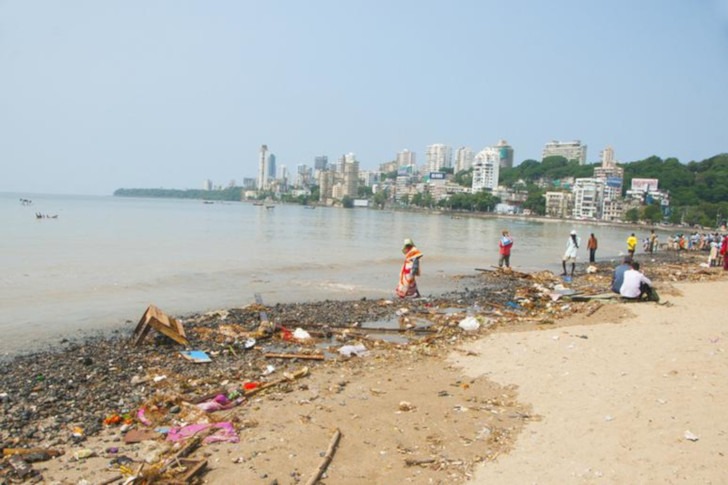 Shutterstock
ShutterstockIf you enter these waters, you’ll be putting your health at risk due to all the bacteria that swim in the waters. If you find yourself on the beach, you’ll likely want to leave because of the smell alone! There are plenty more amazing and clean beaches in India to explore.
Condado Beach – San Juan, Puerto Rico
According to various reports on TripAdvisor, Condado beach is a must-see when you visit Puerto Rico. However, it’s important to point out that they specifically mention how dangerous it is for even the strongest of swimmers.
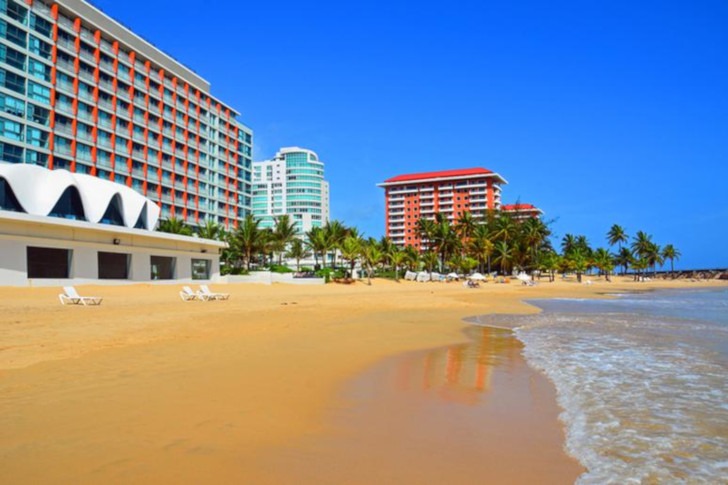 Shutterstock
ShutterstockThe beach is perfect for a day of sunbathing, but many describe the big waves that can drag people under the surface or throw them on to rocks nearby. You’ll want to see the beach but stay out the waters.
Shired Island – Florida, USA
Shired Island is the ‘proud’ winner of America’s most polluted beaches. So, you don’t need to worry about shark attacks or piranha because nothing can live in its waters. Well, that’s not entirely true: there’s a bunch of bacteria there waiting for you.
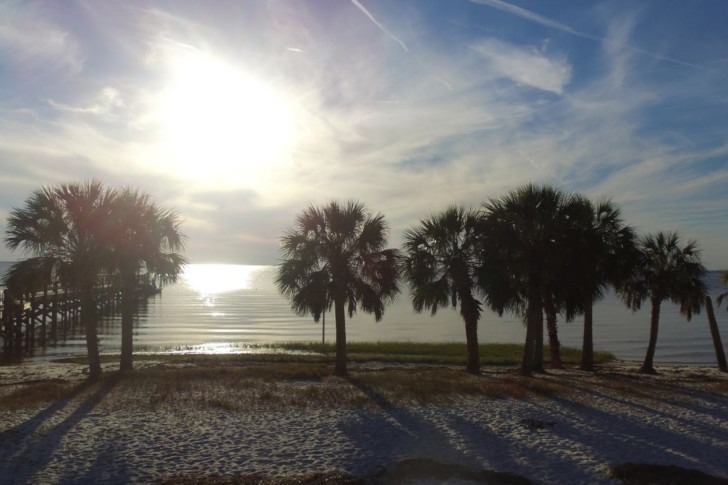 Youtube – SoLottaTech SoLittleTime
Youtube – SoLottaTech SoLittleTimeIf you venture into the waters, you run the risk of rashes, pinkeye, infections, or stomach cramps. It’s probably best if you avoid this ‘winning’ beach.
‘The Beach Of The Dead’ – Oaxaca, Mexico
It might look like a paradise but it is oh-so-deadly. The beach, usually referred to as Playa Zipolite is deadly due to high tides and currents that make it almost impossible to swim in. Strangely, no one can predict how and when they change, making it even scarier.
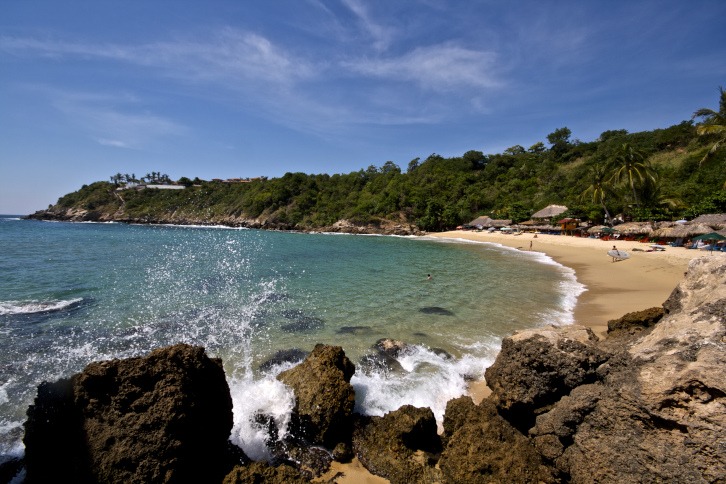 playazipolite.blogspot.com
playazipolite.blogspot.comCertain times of the year make it nearly impossible to even tip your feet into its shallow parts. Thankfully, the death count has reduced in recent years since local authorities hired lifeguards to watch the area.
Great Blue Hole – Belize
You can blame this one on Jacques Cousteau. Ever since he declared it as the ‘world’s best place to go diving’, fans of his and the sport have been exploring the big, blue hole. The only problem? They can’t get out.
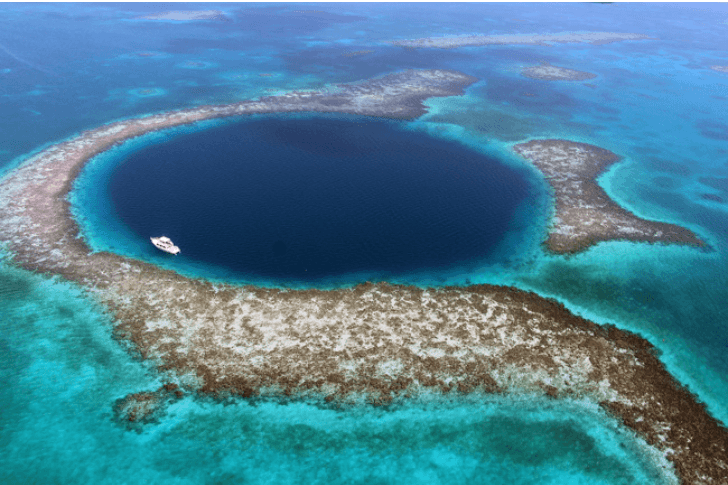 Seann McAuliffe/flickr
Seann McAuliffe/flickr This is because the circular pattern acts as a giant vortex that swirls the water in powerful circles that sucks everything down to its bottom. Once down there, it’s almost impossible to climb up to the top again. It’s unclear if Cousteau went down there or was lying. Either way, it’s costing people their lives.
Yenisei River – Siberia
The Yenisei River lies along the borders of eastern and western Siberia. The calm river flows north until it opens up into the Kara Sea. You might think that taking a dip into the world’s sixth largest river is safe – but you’ll be woefully incorrect. Even though it runs for thousands of miles, you can’t dilute the amount of contaminated liquid in its waters.
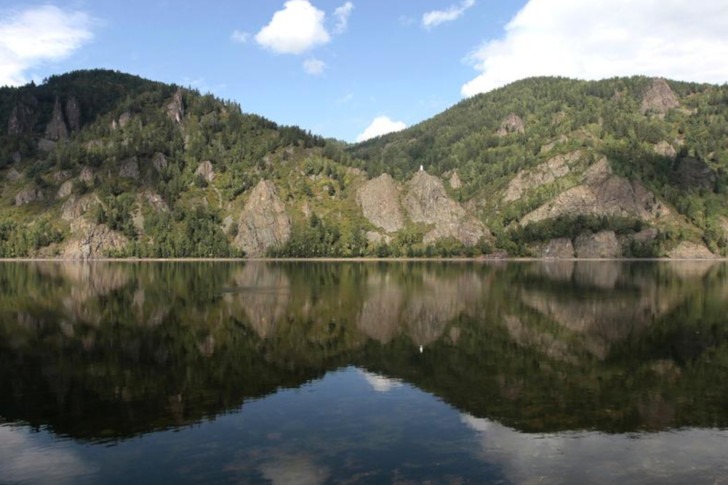 Reuters/Ilya Naymushin
Reuters/Ilya NaymushinIn fact, even if you stay out of its waters you still run radioactive risks. 64,000 people live nearby and have reported unusually high cases of breast cancer, genetic defects, and leukemia. Amazingly, this doesn’t stop the locals from fishing from it.
Fraser Island – Australia
Here’s one of the locations in Australia’s Queensland region that should keep swimmers at bay. Or, on the bay and not in the water. Fraser Island is rich in nature that is more dangerous than people may realize. Dingo attacks, deadly jellyfish, and spinal injuries have all been reported on these coastlines.
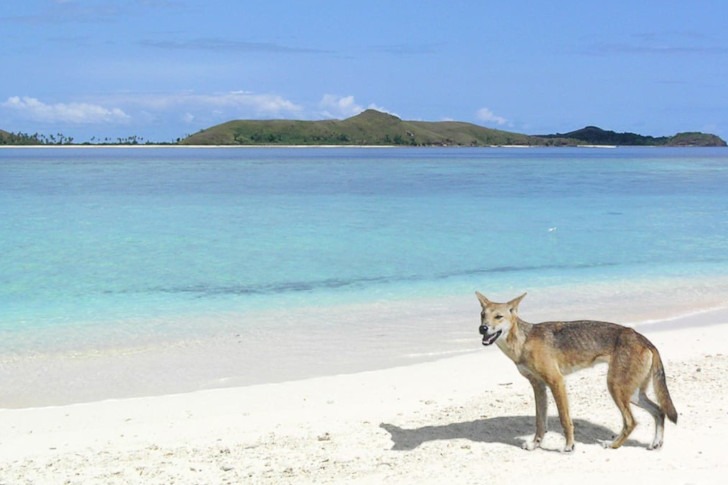 tours.statravel.co.uk
tours.statravel.co.ukAnd that’s just on the beaches. Once you swim into the deeper waters, you might run into sharks and other wet predators. You will want to be extra careful when you walk along the beach and stay on the shore.
Praia da Boa Viagem – Recife, Brazil
We’ve covered the many locations that are rife with shark attacks, but we need to stress the dangers of this Brazillian beachline. Since 1992, there have been 56 reported deaths by sharks on the South American coast. Inexplicably, it’s the highest fatality rate in the world. It must be something in the water.
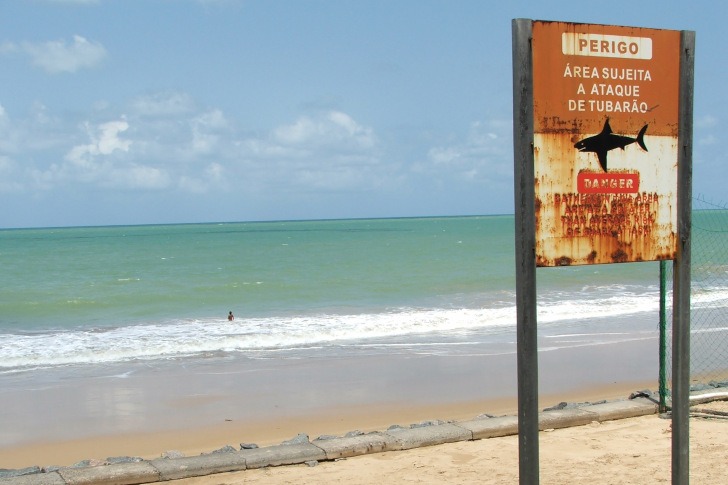 Marta Helena/Youtube
Marta Helena/YoutubeIt’s so dangerous that lifeguards have to practice their training in swimming pools nearby. It is recommended that no one enters the water unless it is deemed ‘critical’ by authorities. If you’re in South America, avoid this beach.
Darwin – Australia
We could honestly make a whole list just on the perils of swimming in Australia. Darwin is one of its beaches that aren’t just full of sharks – crocodiles hide on the rocks by the sea waiting for their dinner! And that’s just on the shore. The waters have box jellyfish, and sharks that will be happy to gobble you up.
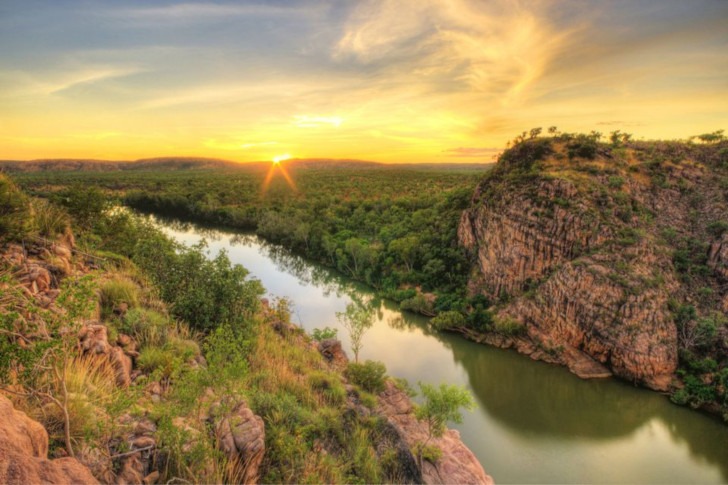 Artie Photography (Artie Ng) / Getty Images
Artie Photography (Artie Ng) / Getty ImagesThere are plenty of beaches that are patrolled and monitored by rangers. If you find yourself in Australia, make sure you only visit the beaches that have been approved and authorized by professionals.
Copacabana Beach – Rio de Janeiro, Brazil
Each year, millions of tourists flock to the shin beaches in Rio. One of the most famous is, of course, is Copacabana. What the iconic song left out of its lyrics is the fact that the water is full of dangerous bacteria and the shores are full of petty crime.
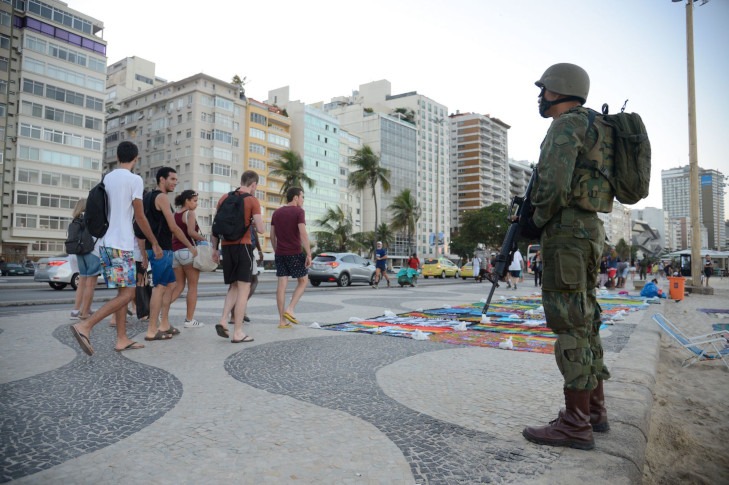 EBC – Empresa Brasil de Comunicação/Agência Brasil
EBC – Empresa Brasil de Comunicação/Agência BrasilForget about the fact you might get sick, local crooks roam the sands and steal from tourists when they leave their bags unattended. Copacabana is dangerous for more than one reason: look out!
Bikini Atoll – US Marshall Islands
Here’s one region which is full of strange history that makes it dangerous today. The US army was known for testing nuclear weapons along these beaches between 1946-1958. This means that all 23 of the neighboring islands have at least some levels of radiation.
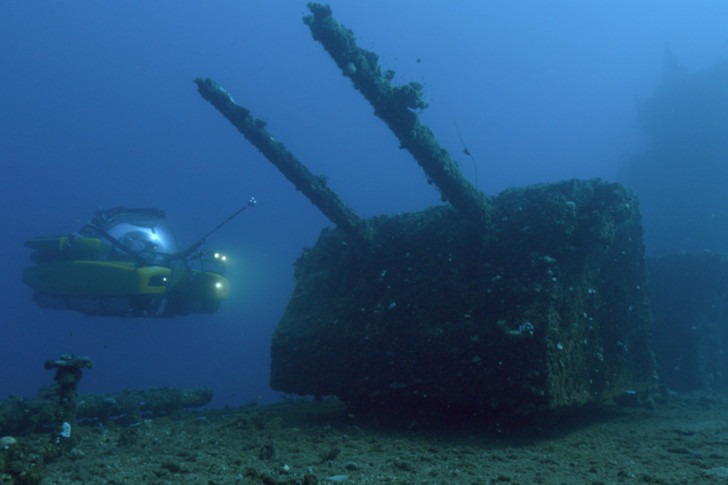 oceanx.org
oceanx.orgEven today, the ground is too poisonous for permanent construction. Plants that grow in the natural areas are deemed off-limits to crop or eat. No one knows how long it will remain like this, but you can bet it will be a few more years.
Potomac River – Maryland, USA
The good news is that the Potomac River doesn’t have of the poisonous or scary creatures we’ve highlighted so far. If you ever find yourself in the Maryland/Virginia region, you might be tempted to take a dip into its lush water.
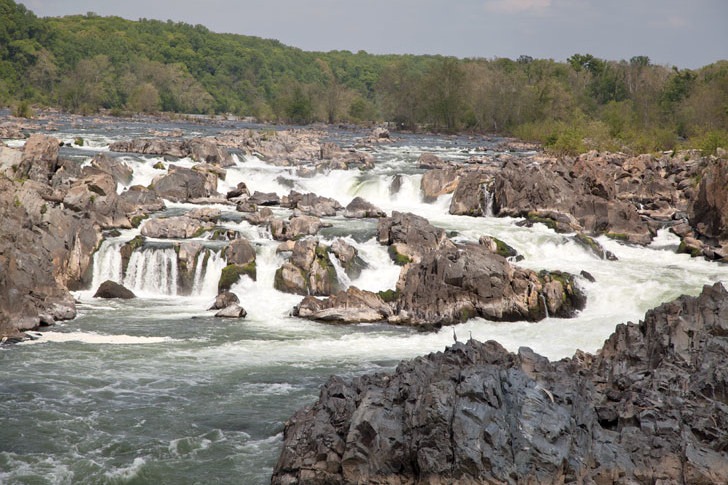 ©Virginia Tourism Corporation / Sarah Hauser
©Virginia Tourism Corporation / Sarah HauserYou’ll want to be extra careful: the current at the bottom of the river is surprisingly strong. Sadly, many a few hikers have taken a quick dip during a walk and found themselves dragged under the surface. You don’t want the same fate so it’s best to avoid it.
West End – Grand Bahama Islands
We often consider the Bahamas as one of the most beautiful places that everyone should visit in their life. Located just off the coast of Florida, the climate offers some of the best swimming opportunities – but you’re going to want to be careful.
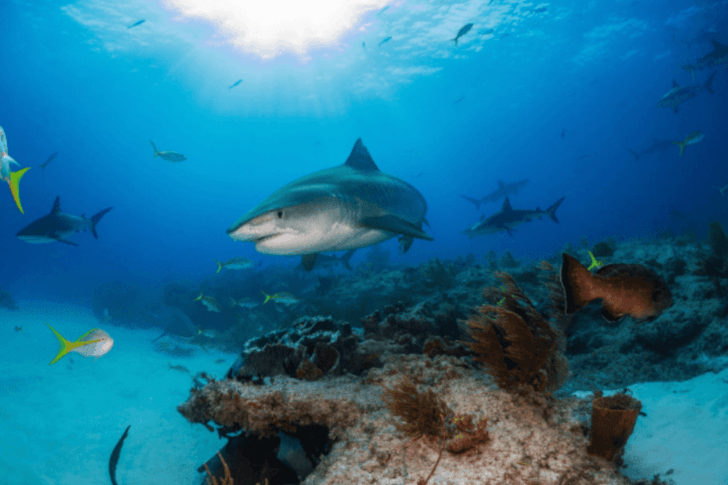 ScubaShooters
ScubaShootersDue to its proximity to Florida, it also has a lot of the same problems. These problems usually occur in the form of great white sharks that too-often attack humans they mistake for seals. Make sure to keep an eye out and try not to look too much like a fish.
Kilauea – Hawaii, USA
We all know that Hawaii is known for its amazing beaches and coastlines. What people might not know is how it is home to a deadly volcano which is still active today. The Kilauea volcano has been signaled as active since 1983 and often has boiling hot lava spill into its oceans nearby.
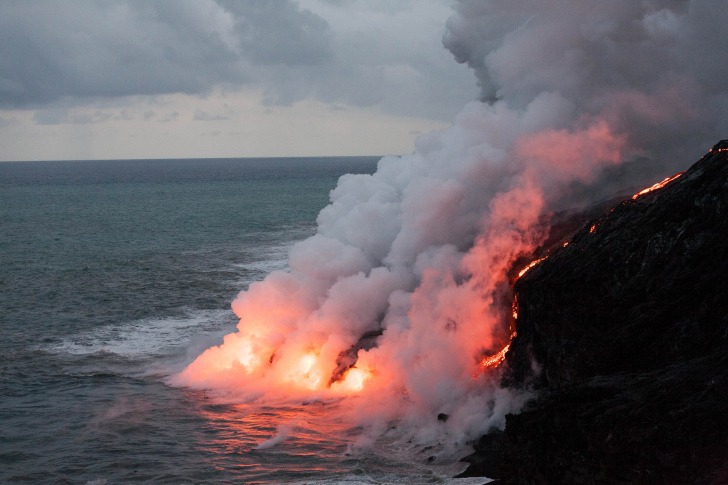 Flickr/Kurt Johnson
Flickr/Kurt JohnsonThe sight might be amazing to see, but you will want to keep a far distance. Rocks can be thrown from the pit and can fly for hundreds of feet. If you’re lucky enough to visit this idyllic island, be sure to keep a safe distance from this place.
Staithes – UK
This part of the north sea in Yorkshire is one of the most famous beaches in Europe – and not for good reason. According to European water-quality standards, Staithes technically fails to be deemed healthy enough for citizens to enter.
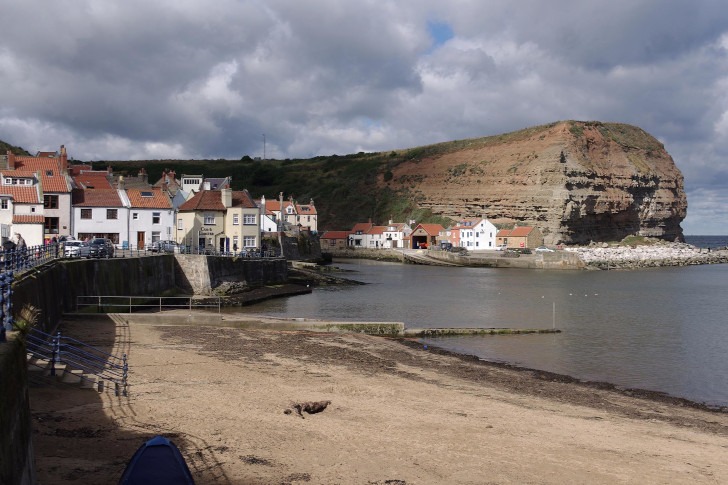 Matt Buck
Matt BuckIn 2010, the local government tried to tackle some of the pollution that was ruining the coastline. Locals can paddle in the waters at their own risk, but anything more than that should be avoided.
Uttakleiv Beach – Norway
It’s quite rare that a Scandinavian coast can be considered dangerous – but it’s not for reasons previously mentioned. There are no pollution or sea creatures to avoid here, but you’ll want to take note of the temperatures. The average temperature of the water at Uttakliev beach is 12 degrees. This is cold enough to induce hypothermia.
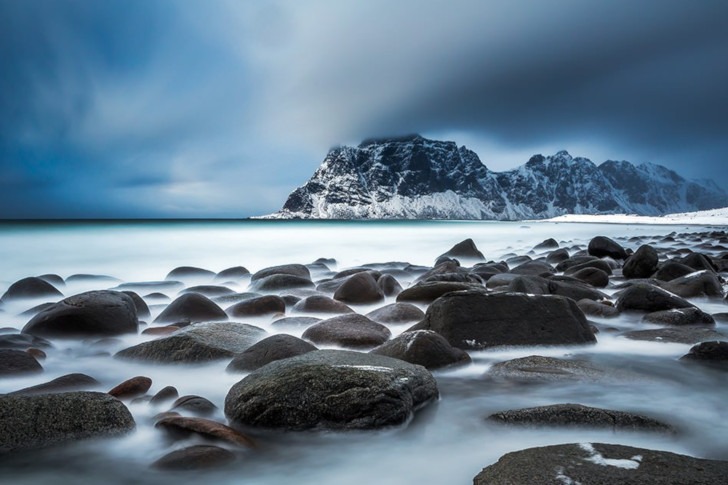 Federica Violin
Federica ViolinTourists should be wary about entering freezing cold waters. The beach is very near the arctic circle and is generally reserved for locals who are used to the cold. You can count us out of this one.
Mindanao Island – Philippines
Parts of southern Philippines are full of beautiful sandy beaches which are perfect to relax on for the day. Partner this with its clear blue waters and you can find yourself in paradise. Well, almost.
 AFP Photo/Ted Aljibe
AFP Photo/Ted AljibeSadly, the island of Mindanao has been rife with terrorism and is the location of attacks on its soil. The ongoing conflict between Muslim militants and government troops makes this spot unsafe for tourists and a danger to visit. You will want to avoid these terror spots if you find yourself in this part of the world.
The Drake Passage – Antarctica
We probably don’t need to tell you twice: don’t go swimming in Antarctica. The Drake Passage can be found right by the South Shetland Islands of Antarctica and South America’s Cape Horn. What makes it dangerous isn’t even its icy waters: visitors also need to battle 80 miles per hour winds and bad visibility.
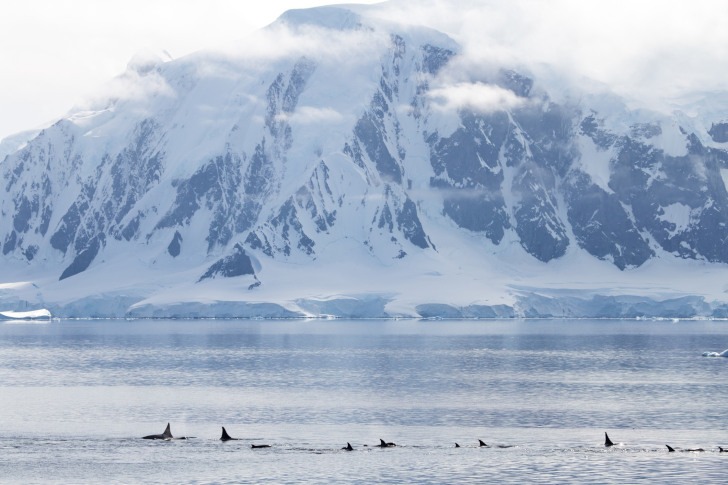 robert mcgillivray/iStock/Getty Images
robert mcgillivray/iStock/Getty ImagesA fun nickname for this part of the world is ‘Ship Cemetery’. This is because the passage is directly responsible for the crashes and sinking of countless ships over the years. We wouldn’t suggest you go down here!
Lake Chaplain – Vermont/New York, USA
This is the 6th biggest lake in the country and has a whole swarm of nasty inhabitants. In fact, it was the inspiration for the 2014 movie Blood Lake: Attack of the Killer Lampreys – which probably tells you everything you need to know.
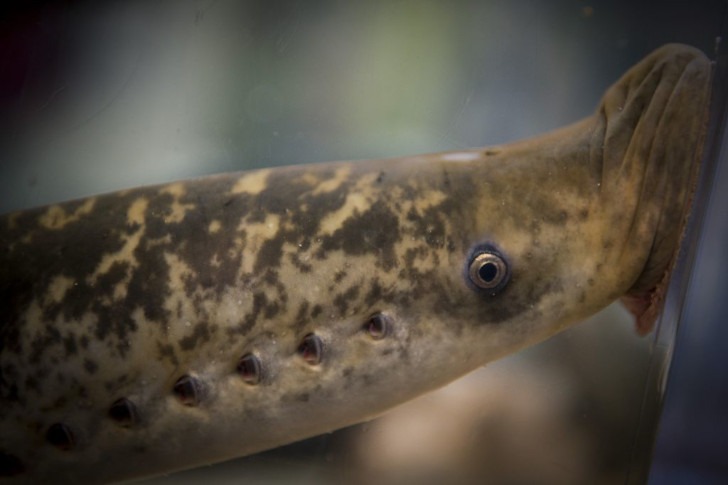 MIGUEL RIOPA/AFP/Getty Images
MIGUEL RIOPA/AFP/Getty ImagesThe lake is full of lampreys which are ancient snake-like fish that suck the blood of their victims. They use their sharp and strong teeth to cling on and don’t let go until they’ve finished dinner. Weirdly, these dangerous fish are also on the rise in British waters. Don’t take a swim in Lake Chaplain.
‘Swimming’ In The Dead Sea – Israel
You might think that it’s impossible to drown in the Dead Sea due to the strange buoyancy the salt content provides. While you can comfortably relax on your back in its waters, you face real danger if you turn on to your stomach.
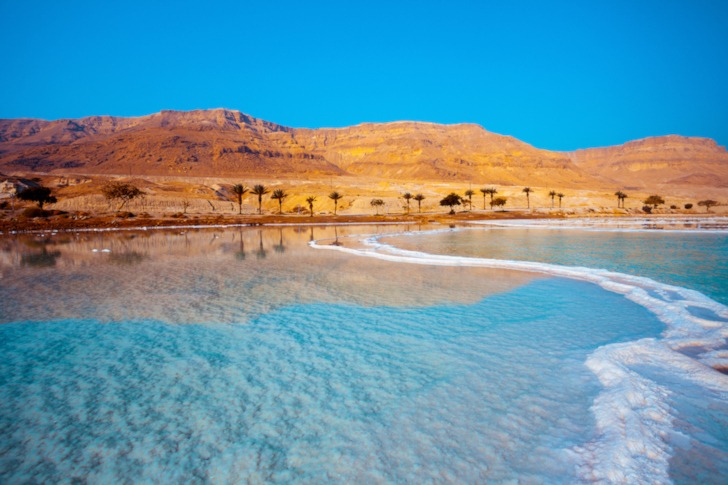 vvvita/Getty Images
vvvita/Getty ImagesFirst, the high salt levels in the water can turn you blind if you open your eyes under the surface. Even if you avoid that, the water is so dense that you will have a hard time flipping yourself on to your back. Generally, people should not enter the Dead Sea unless there is a lifeguard on duty.
Jacob’s Well – Texas, USA
Jacob’s Well can be found in south central Texas and is full of crystal clear water. The water is so clear that visitors can actually stare all the way down the well. While it is certainly cool and deep enough to swim in, that isn’t necessarily the problem.
 teoti.net, via Science 101
teoti.net, via Science 101Down the sides of the well are plenty of cracks and tunnels that lead to different pathways. The problem? Swimmers journey down them and never resurface. You can dip your feet in but don’t swim down!
Swimming in The Gulf Coast?
Yeah, screw this. If you ever find yourself in
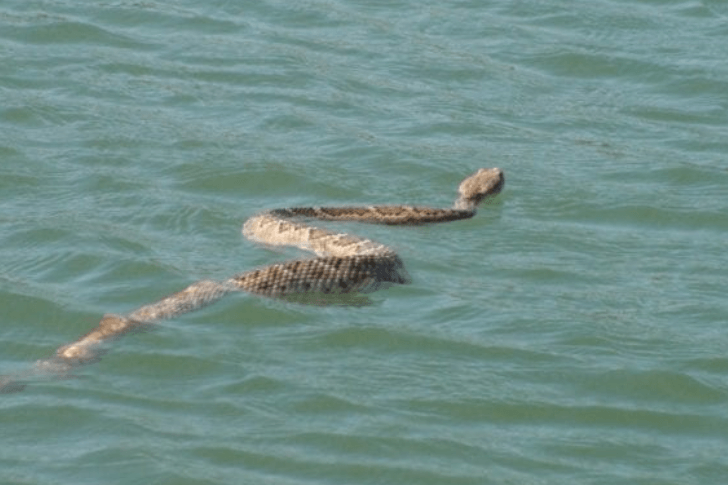
You might think snakes are restricted to the ground in the desert, but they are pretty good swimmers. What’s more, the water is the ideal temperature for them to kick back and relax. So, if you’re thinking of entering the water, then you might want to think again.




